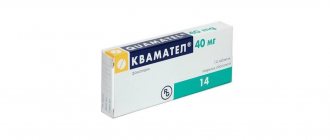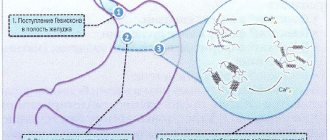"Agio Pharmaceuticals" Representative office
What are ANTACIDS used for?
Antacids have been used to treat stomach problems for over 100 years. The most famous antacid in the past, baking soda, helps to quickly get rid of, in particular, heartburn and stomach pain. However, it, like other absorbable antacids, has a lot of side effects, and modern medicine does not recommend treatment with soda.
After the advent of the powerful antisecretory agents H2-histamine blockers and proton pump inhibitors, it was believed that antacid drugs were becoming a thing of the past, but antisecretory drugs could not solve all problems, and antacids again began to be seen as an important tool in the treatment of acid-related diseases. In addition, new, combined antacid drugs have been developed, which, in addition to acid neutralization, perform adsorbent, cytoprotective and enveloping functions, stimulate the secretion of bicarbonates, increase the synthesis of gastric mucus glycoproteins, protect the capillary epithelium from ulcerogenic factors, bind lysolecithin and bile acids, and also prevent manifestations of flatulence.
Antacids are recommended for use in drug therapy of all acid-related diseases in the following situations:
- in the initial stages of acid-dependent diseases - as the main remedy;
- in treatment with antisecretory drugs, as an additional remedy (in particular, to neutralize acid during the “night acid breakthrough”);
- to eliminate or reduce the intensity of heartburn and chest pain or pain in the epigastric region, both during the main course of therapy and during remission, as a symptomatic remedy.
The main difference between antacids and other acid-correcting drugs is the speed of acid neutralization and, accordingly, a faster but less lasting therapeutic effect. Sometimes it is important that antacids are cheaper than antisecretory drugs.
What types of ANTACIDS are there?
Instructions for use
Adzhiflux is a modern highly effective antacid drug. But this popular product is not suitable for everyone, so you need to study the instructions for it in detail.
pharmachologic effect
Ajiflux is a combination drug from the group of antacids. For a short period of time, the medication affects the mucous membranes of the digestive tract, the general functional state of the stomach and normalizes the performance of certain metabolic processes.
Additionally, the drug restores the composition of bile and has a choleretic effect.
Pharmacological properties:
- carminative effect;
- normalization of intestinal motility;
- neutralization of free hydrochloric acid;
- elimination of symptoms of exacerbation of diseases of the digestive tract;
- decreased activity of gastric juice;
- relief of heartburn of various etiologies;
- elimination of gastric discomfort;
- improving the protective functions of the digestive system.
Indications for use
The list of pathological conditions for which tablets can help is extensive:
- heartburn and discomfort;
The medicine neutralizes free hydrochloric acid in the stomach, reduces the activity of gastric juice, providing long-term protection of the gastric mucosa. - acute gastritis;
- erosive processes in the gastrointestinal tract;
- duodenitis;
- hiatal hernia;
- acute pancreatitis;
- fermentative dyspepsia (as a method of general therapy);
- ulcers;
- hyperphosphatemia;
- reflux esophagitis.
Mode of application
Ajiflux is taken in various situations - for quick relief of an attack or for prevention. Tablets should be taken 2-3 tablets after a meal or before bed, and the suspension should be taken 5-10 ml. If an ulcer is diagnosed, then the dosage regimen changes radically - half an hour before meals. If necessary, the dosage can be increased to 4 tablets. To maintain the therapeutic effect, the course of treatment is extended to 3 months according to the regimen - 3 tablets/day or 15 ml/day.
For preventive purposes, tablets are taken in 1-2 pieces, a suspension of 5 ml before the possible effects of negative factors on the mucous membranes of the gastrointestinal tract.
The effectiveness of the drug depends on how it is taken correctly. The tablets must be chewed until they are completely dissolved. And the suspension must be shaken before taking. The contents of the sachet can be squeezed directly into the mouth, which is convenient under any conditions.
Release form and composition
Ajiflux is sold in the form of round chewable tablets with a mint flavor. Each of them must be smooth on both sides; isolated dark inclusions are allowed. One cardboard package contains two blisters of 10 tablets.
The drug is also available in the form of a suspension of 15 ml in a bag or bottle. There are 30 pieces in one cardboard package.
The active ingredients in the drug are magnesium hydroxide paste (600 mg), aluminum hydroxide in the form of a dry gel (525 mg). Hence the international name - “Algeldrate + Magnesium hydroxide”. Other components:
purified water;
A 2-hour interval should be observed between taking Adzhiflux and other medications.- menthol;
- peppermint oil;
- sucrose;
- sodium saccharinate;
- E 420 (sorbitol solution);
- E 216 (propylparaben);
- hydrogen peroxide solution (30%).
Drug compatibility
The component composition of Adzhiflux affects the action of other medications. In particular, it reduces the absorption of the following substances:
- blockers (H2);
- salicylates;
- ketoconazole;
- diflunisal;
- quinolones;
- indomethacin;
- tetracycline antibiotics;
- barbiturates;
- dipyridamole;
- lansoprazole.
They should be taken before or after Ajiflux, observing at least the minimum interval of 2 hours. But M-anticholinergics, on the contrary, enhance and prolong the effect of the tablets, slowing down the emptying of the stomach.
Main active ingredients
The main active ingredients of modern antacid preparations are magnesium, aluminum and calcium compounds, forming, respectively, the groups “magnesium preparations”, “aluminum preparations”, “calcium preparations” and “combinations of aluminum, calcium and magnesium preparations”, as well as groups including combinations of antacids with various drugs: carminatives, antispasmodics, sodium bicarbonate and others.
Currently, the most in demand are combination products containing aluminum compounds in different proportions (aluminum hydroxide, aqueous aluminum hydroxide (algeldrate), aluminum phosphate and others) and magnesium (magnesium oxide, magnesium hydroxide, magnesium peroxide, magnesium carbonate, magnesium silicate). They do not dissolve in water and have a slower onset of effect over a longer period of time compared to sodium and calcium compounds. These compounds are practically not absorbed into the blood, are characterized by antipeptic properties and partially absorb toxins. Magnesium preparations increase mucus formation and resistance of the gastric mucosa. Aluminum preparations enhance the synthesis of prostaglandins, promote the formation of a protective film on the surface of damaged tissues, adsorb bile acids and lysolecithin, and increase the tone of the lower esophageal sphincter. At the same time, aluminum preparations help slow down intestinal motility and in large quantities can cause constipation, while magnesium preparations accelerate it and have a laxative effect. Therefore, modern antacid preparations often use a balanced combination of magnesium and aluminum compounds.
Side effects
In isolated cases, Adzhiflux causes discomfort:
- nausea and vomiting;
- stool retention;
- distortion of taste sensations;
- with renal failure - thirst, hyporeflexia, decreased blood pressure.
Overdose
When taking Ajiflux, it is necessary to avoid overdose. Violation of the antacid dosage regimen can cause serious pathological conditions. Uncontrolled use of the medication is strictly prohibited for patients with severe liver dysfunction. The consequences of an overdose can provoke irreversible deviations.
The first signs of negative consequences when dosages are exceeded are dry mouth, nausea, constipation and impaired taste.
Other consequences of overdose:
- osteomalacia;
- hypophosphatemia;
- hypermagnesemia;
- hypocalcemia;
- encephalopathy.
To prevent the consequences of the disease, you should carefully follow preventive measures; at the first signs of stomach damage, contact a medical organization to find out the causes and prescribe the necessary therapy.
Contraindications
Adzhiflux has a number of strict contraindications:
- intolerance to the components of the drug, hypersensitivity to them;
- serious kidney pathologies;
- Alzheimer's disease;
- age restrictions (12 years);
- hypophosphatemia.
During pregnancy
Adzhiflux is prohibited for pregnant women. Nursing mothers should take the drug with great caution.
Release form and composition
Dosage form – chewable tablets: round in shape, smooth on both sides, white (possible presence of isolated dark inclusions), with a mint smell (in blisters of 10 pcs., 2 blisters in a cardboard pack).
Active substances in 1 tablet:
- Aluminum hydroxide (including aluminum oxide not less than 76.5%) – 400 mg;
- Magnesium hydroxide – 400 mg.
Auxiliary components: povidone, mannitol, isopropanol, sodium saccharinate, sorbitol, sucrose, purified water.
Lubricant composition: magnesium stearate, colloidal silicon dioxide, peppermint leaf oil.
special instructions
Impact on the ability to control complex mechanisms and drive vehicles
The antacid does not reduce concentration and does not change the speed of natural psychomotor reactions. It is necessary to avoid driving vehicles or interacting with dangerous mechanisms if adverse symptoms occur.
Use in childhood
It is not prescribed during pregnancy due to contraindications. Adzhiflux in the form of a suspension is approved for use in pediatrics for children from four months, but only with special instructions. For other forms of release of the drug, other age restrictions apply (the medication is contraindicated under twelve years of age). The dosage regimen for young patients is compiled individually. It is acceptable to prescribe an antacid for prophylactic purposes.
Pregnancy and lactation period
Adzhiflux should not be taken by pregnant women or during lactation. The corresponding restrictions are noted in the list of contraindications by the manufacturer of the drug.
For impaired renal function
Adzhiflux is prohibited for use in patients with severely impaired renal function.
For liver dysfunction
The presence of liver dysfunction in a patient is grounds for additional consultation with a doctor. The drug can be prescribed with an individual dosage regimen or replaced with safer analogues.
Conditions for dispensing from pharmacies
A prescription is not required to purchase Ajiflux.
Did you know that the most common diseases of the 21st century are liver problems? More details:
- How to recognize the first signs of hepatitis and effectively cope with the disease?
- An interesting article about liver cirrhosis, you will learn about the history of the disease and its prevalence in the world.
- Pain or discomfort in the right hypochondrium? Perhaps it's hepatosis! How can it be cured?
Absorbable antacids
Absorbable (soluble) are those antacids that either themselves or the products of their reaction with hydrochloric acid dissolve in the blood. A distinctive feature is the rapid decrease in acidity after taking the drug, but at the same time there is also a short duration of action and a significant number of negative side effects, due to which absorbable antacids are today considered less preferable compared to non-absorbable ones.
Neutralization of hydrochloric acid by absorbed antacids is accompanied by the formation of carbon dioxide, which provokes gastroesophageal reflux and also stretches the stomach, causing acid secretion. Absorbed antacids often cause acid rebound—an increase in stomach acid production after the drug wears off.
In addition, the absorption of bicarbonates into the blood can lead to the development of systemic alkalosis.
Absorbable antacids include:
- baking soda (sodium bicarbonate, NaHCO3);
- burnt magnesia (magnesium oxide, MgO);
- basic calcium carbonate (CaCO3);
- basic magnesium carbonate (4MgCO3 Mg(OH)2 4H2O or 4MgCO3 Mg(OH)2 5H2O);
- "Bourget's mixture" (a mixture of sodium bicarbonate, sulfate and phosphate);
- preparations "Rennie", "Tums", "Andrews Antacid" (a mixture of calcium carbonate and magnesium carbonate.
Patient reviews
Adzhiflux has earned the trust of doctors and patients. Most reviews about the drug have positive connotations. The drug has an affordable price; patients with a modest budget can afford it.
Tablets and suspensions relieve pain very quickly - relief occurs within 15 minutes. It is also convenient that the drug can be taken for prevention. For example, if a certain product causes discomfort, but you cannot get away from it. Side effects are extremely rare if all recommendations are followed, so Ajiflux is safe for health.
Acid rebound
The term “acid rebound” refers to an increase in acid production after the end of the action of medications intended to reduce acidity in the gastrointestinal tract. Especially often, acid rebound occurs when taking absorbed antacids, as a reaction to too rapid alkalization of the environment in the stomach, which activates the secretion of hydrochloric acid. Some time after taking the drug, stomach acidity increases and can reach 1/3 of the maximum output. This secretion is the result of stimulation of gastrin production from G cells, as well as the direct effect of calcium cations on parietal cells. Therefore, it is not recommended to use calcium-containing antacids at night, when the acid rebound cannot be neutralized by eating.
Indications for use
Acute gastritis; hyperacid gastritis; acute duodenitis; peptic ulcer of the stomach and duodenum (in the acute phase); symptomatic ulcerative lesions of the stomach and duodenum of various origins; erosion of the mucous membrane of the upper gastrointestinal tract; reflux esophagitis; hiatal hernia; acute pancreatitis; exacerbation of chronic pancreatitis; hyperphosphatemia; discomfort, gastralgia, heartburn (after excessive consumption of ethanol, nicotine, coffee, taking medications, errors in diet); fermentative or putrefactive dyspepsia (as part of combination therapy).
Drug interactions
Ajiflux slows down and reduces the absorption of the following drugs: barbiturates (they should be taken 1 hour before or 2 hours after taking an antacid), H2-histamine receptor blockers, indirect anticoagulants, beta-blockers, chenodeoxycholic and ursodeoxycholic acids, salicylates, tetracycline antibiotics and quinolones (grepafloxacin, ciprofloxacin, enoxacin, ofloxacin, norfloxacin, etc.), ketoconazole, itraconazole, digoxin, phenytoin, pivampicillin, azithromycin, rifampicin, chlorpromazine, indomethacin, isoniazid, penicillamine, dipyridamole, diflunisal, cefpodoxime, lan soprazole, zalcitabine, fexofenadine .
M-anticholinergic blockers slow down gastric emptying, thereby enhancing and prolonging the effect of Adzhiflux.



